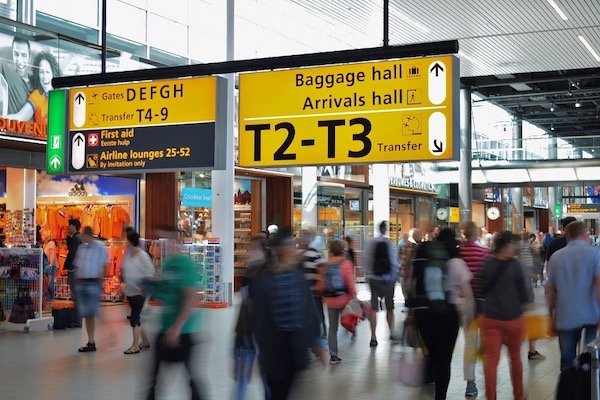Airline capacity across Europe is struggling to meet initial recovery expectations. Revised traffic forecasts project a longer timeline for returning to pre-pandemic levels, pushing full recovery out to 2026.
Despite these setbacks, improvements in punctuality and strategic adaptations by airlines offer hope for a robust recovery. Eurocontrol’s latest data provides a comprehensive overview of the industry’s trajectory.
European Airline Capacity Falls Short of Expectations
Recent data from Eurocontrol indicates that airline capacity in Europe has experienced a slower recovery than previously anticipated, with full restoration to 2019 levels now delayed until 2026. This revision comes after a period of “lower than expected volumes” of traffic since last November. During July to September of last year, traffic reached 93% of 2019 levels, improving to 95% in October, but then decreased again in November and December to between 92%-93%.
Eurocontrol had initially projected traffic would return to 97% of 2019 levels by January and February of this year. Contrary to these predictions, traffic levels fell to 90% in January and 91% in February, prompting a reassessment of future forecasts. Eurocontrol now suggests that traffic will reach 96% of 2019 levels by the end of this year and 99% by 2025, surpassing the 2019 level only in 2026. Nevertheless, flight numbers are expected to match those of 2019 by the next summer season.
Improved Punctuality Despite Capacity Challenges
In an update provided in March, Eurocontrol reported that traffic had reached 93% of 2019 levels mid-month, with notable improvements in punctuality surpassing not only 2023 figures but those of 2019 as well. The proportion of on-time departures increased by 3.6 percentage points while on-time arrivals saw a 5.1 percentage point rise compared to 2019.
Eurocontrol identified that half of the enroute delays occurring in mid-March were attributed to capacity and staffing issues. Specifically, France accounted for 46% of these delays, followed by Spain at 15%, Switzerland at 13%, Portugal at 12%, Germany at 8%, with the UK responsible for just 3%.
Variations in Traffic Performance Across Europe
The United Kingdom’s traffic figures remained 8% below 2019 levels, similar to that of France. Conversely, Germany experienced a significant reduction of 22%, while Spain and Turkey saw traffic increase by 8% and 4% respectively.
Traffic performance varied substantially across major airports, with Heathrow matching 2019 levels and Gatwick experiencing a 13% reduction. Notably, the UK-US route emerged as the busiest long-haul connection, boasting over double the weekly flights compared to Germany-US and even more than the cumulative flights between Germany, France, and the US.
Overall, traffic between Europe and the US saw a 12% increase compared to 2019. This growth highlights the variable impact of the pandemic on different airline routes and markets, with some sectors rebounding more robustly than others.
Impact of the Ukraine Conflict on Flight Distances
One notable trend identified by Eurocontrol is the increase in flight distances, especially to and from the Middle East and Asia. This development is “linked to the conflict in Ukraine,” which has necessitated longer routes for certain flights. The continuation of these longer routes has implications for fuel costs and scheduling, potentially influencing future air travel strategies.
This necessity for extended routes underscores the dynamic nature of global air travel, where geopolitical events can significantly alter operational norms and industry expectations. It illustrates an evolving landscape that requires adaptability from airlines and regulators alike.
Forecasting Future Travel Demand and Challenges
Looking towards 2030, Eurocontrol’s forecast accounts for several factors potentially constraining demand, such as shifts in domestic travel preferences and heightened environmental awareness. Additionally, limitations on airport capacity and delays in aircraft deliveries are anticipated to “put pressure on flight growth”, possibly leading to a 1% reduction in demand due to missed capacity at major airports.
These challenges highlight the importance of strategic planning and investment in infrastructure to accommodate growing demand and new travel patterns that emerge as a result of ongoing changes in the global environment.
Airline Industry’s Strategic Responses
Faced with fluctuating recovery rates and changing operational demands, airlines are reassessing their strategies to better align with current trends. By implementing adaptive measures such as optimising fleet utilisation and enhancing passenger experience, the industry aims to meet emerging needs while maintaining competitive advantage.
In light of capacity challenges, strategic partnerships and technological innovations are expected to play critical roles in shaping the industry’s trajectory forward. Airlines are also exploring sustainable practices to meet regulatory and consumer expectations, as the emphasis on environmental responsibility continues to grow.
Conclusion and Looking Ahead
The airline industry’s path to recovery is complex, shaped by varying recovery rates across regions and unpredictable factors such as geopolitical tensions. However, the improvements in punctuality and growing traffic volumes on key routes suggest resilience within the sector.
As airlines adjust to these challenges, the emphasis on strategic adaptation and future readiness will likely define their success in navigating the evolving landscape of air travel.
The path towards recovery in European airline capacity is intricate and nuanced, presenting both challenges and opportunities. As the industry adapts and evolves, its resilience will be key to overcoming hurdles.
Ongoing strategic efforts and adaptability will define how well the sector emerges from these testing times, ensuring a stable and successful future.

